Since I’m always looking for ways to keep this blog as fresh as a livid corpse, I’ve lately been casting about for ideas on a new series to supplement my “Creepy Scenes” one (which will continue, don’t fret). Just two days ago, I had a moment of kismet when I ran across a Cracked article titled “9 Terrifying Old Movies That Put Modern Horror To Shame,” and just like that, the fabled witchlight switched on in my head. So without further delay, I’d like to introduce a new series here on Goddess of Hellfire, “Scary Silents.”
I’ve always had a fascination with the very earliest days of cinema, particularly as it relates to horror film. There’s something so enthralling about the films that were made when the medium was brand new, when all the possibilities were first becoming apparent. There were limitations, sure, but oftentimes, limitations can be the spur to mad creativity, and that was certainly the case in many of the earliest movies in the horror genre. These films, many of them now nearing (or surpassing) a century old, have such a pleasingly otherworldly feel, with their shuddering camera work, their luminous black and white tableaus, and their broad theatricality. Watching the best of them, it’s easy to imagine that they seeped in from some other, creepier dimension, one of flickering lamplight and mystery. Obviously, some of the effects are crude by today’s standards, and much of the acting is necessarily exaggerated due to lack of spoken dialogue, but to me, that only contributes to their eerie charm. And some of them, particularly the non-American ones, contain some pretty shocking imagery for the time.
As is my wont, I’d like to discuss some of the slightly lesser-known films in the silent film oeuvre. Yes, Nosferatu, The Cabinet of Dr. Caligari, The Phantom of the Opera, and Un Chien Andalou are fantastic, but they already get a ton of ink and bandwidth, so I probably won’t discuss them here (although I may change my mind about that, who knows). I would like to focus mainly on excellent examples of the genre that perhaps haven’t been so widely seen and discussed.
To that end, in this first post I want to talk about the 1922 Swedish-Danish co-production Häxan, known in English as The Witches or Witchcraft Through the Ages. If you’re curious, there was a Criterion Collection version that came out in 2001, or if you’re impatient like me, you can watch the whole thing (with English subtitles) right here:
The film is structured in four parts, and was actually conceived as a documentary. Writer/director Benjamin Christensen had done a two-year study of the infamous Malleus Maleficarum, and sought to bring his knowledge to new audiences. For that reason, the first part of the film (comprising about fourteen minutes of runtime) is basically a short summary of both the history of witchcraft and the perceptions of Hell and the solar system common in the Middle Ages. This section of the film is illustrated with stills of woodcuts that will be familiar to anyone with a passing knowledge of medieval witch legends, which I would assume is most people reading this blog. Bunch of sickos, all of ya. *kisses*
Anyway, it’s the second part where Häxan becomes more like a traditional film, with short vignettes reenacting various aspects of witchcraft in the medieval period, and then a longer story in the middle that dramatizes one particular case of an accused witch being brought before the Inquisition. This middle section is the best part, chock full of curses and flying ointments and torture and old crones mixing potions by moonlight from pieces of corpses pulled from the gallows, and anyone who’s read my novel Red Menace knows how much I love all this kind of old-school witchery stuff.
About 15 minutes in, a witch pulls a grody corpse hand out of a pile of straw and pulls off a finger, sniffing it experimentally. Weird, but you do you, babe. She then pronounces that the thief’s corpse had been too long on the gallows, and that the old, stinky finger isn’t gonna be any good for the brew. She soldiers on, though, throwing frogs and snakes and other unidentifiable things into her pot.
A woman then comes to the witch for a concoction that will melt the heart of her beloved, a fat monk who is later revealed, in a shocking plot twist, to be one of the main Inquisitors. The witch makes a delicious potion of cat feces and dove hearts. But then the woman wants the stronger stuff, so the witch gives her a potion boiled with a male sparrow, which evidently makes it like EXTREME love potion. Also, as a kinda two-for-one deal, the witch gives the woman an ointment that will let her and the object of her affections fly through the air and make kissy-face among the clouds. There are some broadly comic moments as the woman imagines the porcine monk taking the potion and then chasing her around a table and out into the woods before macking the hell out of her.
Things get REALLY interesting in later vignettes when the Devil (played by the director himself) shows up and starts pulling all kinds of evil shenanigans. “The Devil is everywhere and takes all shapes,” a title card informs us after his scary ass has popped up in a monastery and begun screwing with the chubby monks therein.
There are some really lovely silhouette shots of a naked woman walking zombie-like across a moor after being called by the Devil. One of my favorite scenes included one where the Devil comes to the window of a sleeping couple and begins banging on the shutters to call the wife to him, going all GET YOUR ASS OVER HERE, HO with his big clawed hands. Delightful.
One particularly cool sequence occurs when the Devil summons his minion, a poor woman named Apelone, into her “dream castle” where he showers her with money and a sumptuous feast, then begins to claw his way through the wooden door. The stop-motion animation here is great, and the little Devil figure, with his creepy beaked face, is super well done. Very Lynchian, this part.
In the longest segment of the film, there is a family gathered around the bed of Martin, a printer who has suddenly fallen ill. One of the male relatives wafts a ladle of hot lead over the sick man, and then drops the lead into a bucket of cold water, since the shape the lead takes will determine whether the man’s illness was caused by witchcraft, obviously. The guy pulls the lead shape out and is all OH SHIT, Y’ALL, THAT’S A BEWITCHING ALL RIGHT, and the gathered women are like AWWWW, HELL NO. The printer’s wife, Anna, gives food to an old beggar woman who comes in, and the old woman stuffs gruel in her face like a pig and totally blows a snot rocket on the floor and also has the evil eye, so the lady calls in the Inquisition, yo, since this beggar woman is clearly the agent of the bewitchin’. Family members throw the old woman in a bag (with one of the older female relatives making a particularly amusing YEAH, GET HER!!! gesture) and take her away.
The next bit, we cut to the Inquisition in progress, where the ancient old woman (Maria the Weaver is her name) is getting her torture on while the gathered monks swig wine and harangue her to CONFESS, CONFESS! At first she denies any witchy doings, but then the pain is too much for her and she’s all OKAY, FINE, I BIRTHED THE DEVIL’S BABIES, YOU HAPPY NOW and yes, they are happy, because now Maria is gonna confess all kinds of scandalous shit that the monks get to listen to and write down for later, masturbatory perusal. Maria starts telling the monks about all the witchery, and there are extended flashback sequences of a sabbath. The scenes of the witches flying are pretty cool, I gotta say. There are more beautiful shots with the witches flying across the sky in the background while the silhouetted devil orgy goes on in the foreground. The imagery of the witches’ sabbath is really gorgeous and unsettling, especially the weird skeleton-horse thing that lopes into the frame at one point, and the potion that one of the witches drops a dead baby in. There’s dancing and some (tasteful) nudity, and ladies making out with demons and doing jigs all over a cross on the ground. The monks are listening to this raptly, all WTF THIS IS KINDA HOT YOU GUYS. Maria tells them about the Devil-butt-kissing ritual, and the monks laugh and laugh like twelve year old boys.
Through some plot contrivance, the comely printer’s wife also ends up accused of witchcraft, because payback is a bitch. I think it happened because the youngest Inquisitor had the hots for her, so the other monks assumed she had bewitched him. For his sinful thoughts, the littlest Inquisitor gets a whippin’, and when the whippermonk stops, the younger guy is kinda like WHY DID YOU STOP I WAS TOTALLY INTO THAT. You know those monks are total freaks.
One of the monks tells Anna he will let her free if she shows him one of them there witchy spells, and I’m all DON’T DO IT, GIRL, IT’S A TRAP, even though of course she’s not really a witch and can’t do magic, so what the hell am I even saying. The monk then tells her that her baby will be alone in the world without her, and then the monks actually bring the baby to the prison to show her, because monks are just the worst. Meanwhile the other monks are listening in, waiting for her to do the spell for the first dude so they can later testify that she’s a sorceress for real. See? Trap. CALLED IT. So then she starts telling them how to make thunder out of the water, because y’know, baby and freedom, and then the main monk pokes his fat face through the window and is all like GOTCHA, GONNA BURN YOU ALIVE TOMORROW, LOL and Anna is all YOU MOTHERFUCKERS and starts beating on the one monk in the cell with her, as you would, so she gets hauled off too. Cut to all the monks packing up their shit and moving on to the next town, because their work here is done (that work being torturing the shit out of innocent women and getting their sadistic jollies, obviously).
The next chapter is kind of an overview of witch confessions, torture equipment, and so forth, and opens with a creepy image of a door flanked by two people wearing scary pig heads.
And then all these other people in scary animal heads come shuffling out of the door and to be honest it kinda freaked me out. This bit’s kinda uncomfortable, because even though they don’t show anyone getting tortured for real, they do show actual people in the contraptions and show how they worked with a very matter-of-fact, “like so” kinda vibe. “One of my actresses insisted on trying the thumbscrew,” the director says in a title card, and then there’s footage of a laughing young woman wearing the thing while the hand of someone off camera begins tightening it. And suddenly her laughing mouth starts looking more like YOOOOWWWWCCCCCHHHH!!! “I will not reveal the terrible confessions I forced from the young lady in less than a minute,” the next title card reads. Very droll, Mr. Director.
Then there’s a nun putting on a spiked belt as a weird sort of self-flagellation, then there’s a whole convent of nuns running around like lunatics. And then the Devil’s back, wagging his tongue at another nun.
The Devil reaches into a box and pulls out what looks like a big spiked dildo and hands it to the nun and she takes it from him, looking horrified, before the cut. In the next scene we see that it’s a knife, and I guess the Devil wants her to stab someone with it, but she’s all GET THEE BEHIND ME and flings the knife away, only to have the Devil pop up behind her and brain her with a club. This is kind of a weird movie, if you hadn’t noticed.
She gets up off the floor, all flummoxed, and the Devil cracks open the door and gestures to her, so she picks up the knife and zombies her way after him, lookin’ all pop-eyed and crazy. She goes to the altar and with the devil’s encouragement, pulls out one of them Jesus crackers and goes to stab it while Jesus appears all like NOOOO, DON’T DO IT, MY CHILD, but I guess she does because then all the other nuns file in and find her all zonked out and they look in her hand at the wafer and they’re all like SISTER CECELIA’S IN LEAGUE WITH THE DARK ONE, Y’ALL and the nuns freak out and scatter. Then Sister gets up and starts lurching toward them, and the Mother Superior is giving her a piece of her mind vis-a-vis consorting with evil, and the sister sticks her tongue out at the Mother. And then all the nuns start dancing around and laughing, because I guess the Devil got them too through the power of the nunly raspberry, and the Devil wags his tongue and happily surveys his handiwork. In the next scene, another nun kipes the baby Jesus statue off the altar and carries it to the Inquisitors and tells them they need to burn her at the stake tout suite because the Devil is making her do some bad shit. She then spits on the baby Jesus and screams that the Devil is RIGHT IN THE ROOM, YOU GUYS. Fade to black.
The last chapter is sort of from a modern perspective, with the director pointing out that poor old women were usually the innocent victims of these medieval wackos, and then enumerating all the ways a woman could “stand out” back then and get the fingers of the Inquisition pointed at her. Like here’s a woman with a hunchback, or who is blind in one eye, or otherwise looks kinda fucked up or diseased. And then the director says, via title card, that we shouldn’t think that the Devil is only consigned to the past, because the actress who played the old witch Maria in the film once told him that the Devil was real, and that she’d seen him at her bedside.
But he says that now we know that all of the so-called symptoms of witchcraft were simply physical or mental ailments, and he has an actress portray a few of these ailments as examples, including pyromania, sleepwalking, hysteria, and the like. It then goes into a discussion of witch’s marks, and shows a naked and prone woman on an altar with the devil’s claws touching her back in various places. Then there’s those Inquisitors, leering at a topless woman while poking at her for signs of those “insensitive” areas. Contrast that with the next scene, which shows a modern doctor poking at a woman’s back, understanding that such areas on the body are completely normal and merely a symptom of that good old feminine complaint of “hysteria.” (This WAS almost 100 years ago, y’all; they weren’t THAT modern.)
And then it’s kinda weird, because one of the doctors says something to the mother of the patient about “Y’know, it would be a shame if your daughter’s hysteria made her have a run-in with the police” (WTF) and then the title card says, “Poor little hysterical witch! In the Middle Ages you were in conflict with the church. Now it is with the law.” I can’t really tell if the director was actually feeling pity with the women, or if he’s just being a sarcastic douche. That’s one of the downsides of silent movies, I guess; you can’t hear people’s tone of voice, and the text in silent movies doesn’t have emoticons.
Then, inexplicably, there’s a scene of a woman in a jewelry store totally pulling a klepto while the jeweler’s back is turned. So I guess that’s what the law thing was all about. The jeweler peeps in the ring box and is all HEY, THERE WAS ANOTHER RING HERE and the chick’s all I HAVE NO IDEA WHAT YOU MEAN, WHAT ARE YOU ACCUSING ME OF, SIRRAH? Jeweler’s all, INTO MY OFFICE MISSY OR I’M CALLING THE FIVE-O, so she sheepishly goes into the office and hands over the ring she swiped. And then the jeweler’s all GIVE ME YOUR CARD IMMA CALL YOUR MOM even though the woman is like forty. The woman begs him not to contact her family, or else she will be “forcibly detained,” which doesn’t sound too good, and wait, weren’t there witches and devils and stuff just a few minutes ago? This is taking a turn into crazy town.
Anyway, she tells him she’s not well, and that her behavior is seemingly caused by something outside herself, and I suppose we’re just trying to draw parallels between the treatment of mentally ill women in the modern day as opposed to the days of the Iron Maiden, but it’s still a bit odd. And then the woman is like YEAH, I’M BROKEN, AND LOOK, HERE’S SOME OTHER SHIT I STOLE, I’M SO CRAZY, and probably showing your other pilferings to a guy you just tried to steal from isn’t the brightest idea, but she’s arguing for her life, you guys. Then she pulls out the pity card by saying that her husband died in the war and she hasn’t been the same since. And it totally works! See, we have compassion nowadays, not like those bloodthirsty medieval fuckers, and the jeweler lets her skate. I admit I actually did feel bad for her, so good on ya, jeweler guy.
At the very end, there’s a little recap of the medieval view on Hell and such, and the implication that it’s awesome we don’t really believe any of that silly shit anymore. He says there are no more witches on broomsticks, and then there’s a shot of a smiling woman piloting a biplane. YEAH, GIRL POWER! But wait, he says! Superstition is still rampant! There are still tarot readers and crystal ball gazers galore! We no longer burn the old and poor, but don’t the poor still suffer? Are we really that different? No, Mr. Director, we are not. Food for thought, my minions. Food for thought.
And because happy endings are not very Swedish and all, the final shot is of bodies burning alive at the stake, so that’s nice. I also enjoyed the ending title card that simply said, “SLUT” (which is Swedish for “end” or “out,” but don’t spoil my juvenile fun).
Until next time, Goddess slut. I mean out.
Slut.
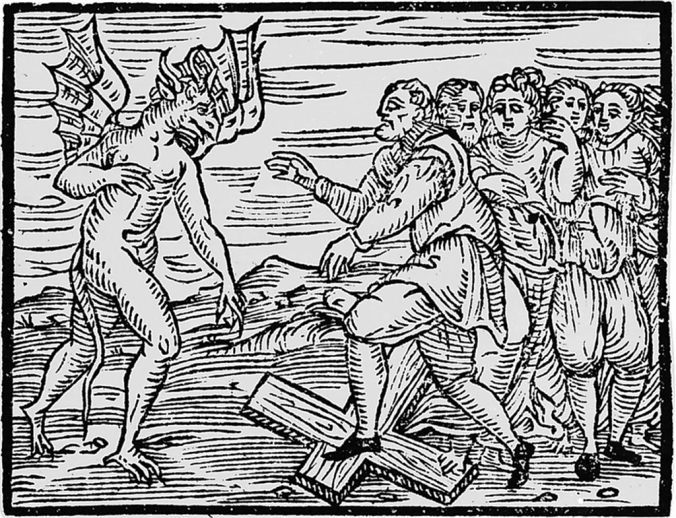
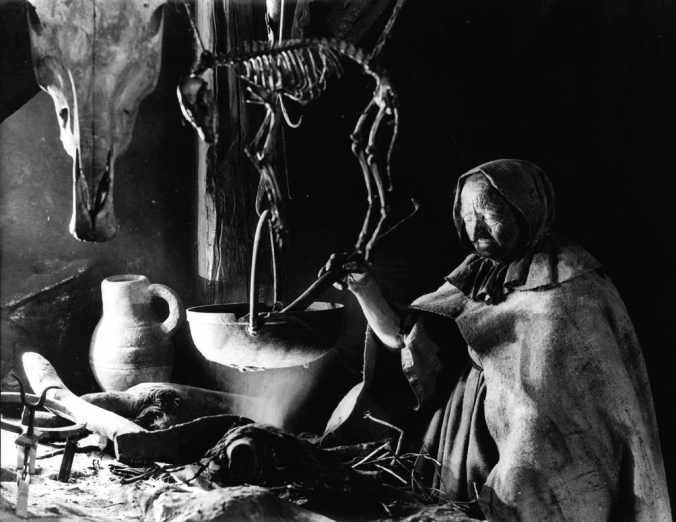
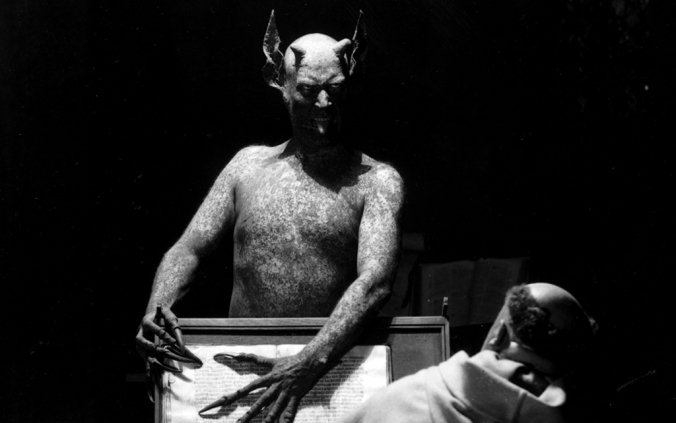

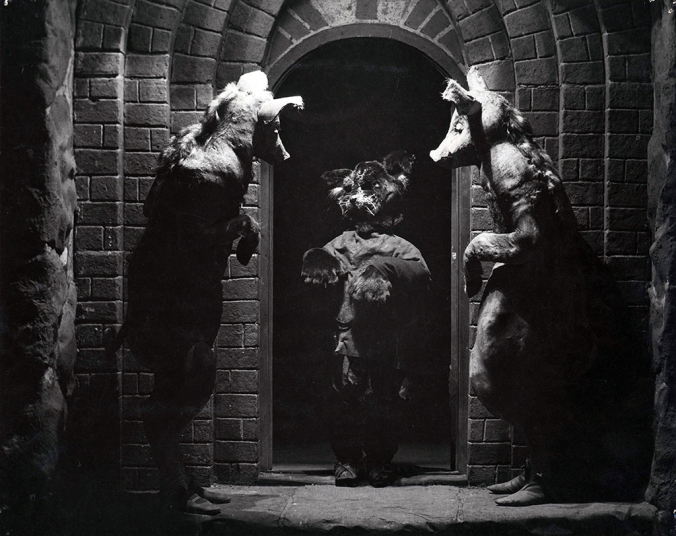

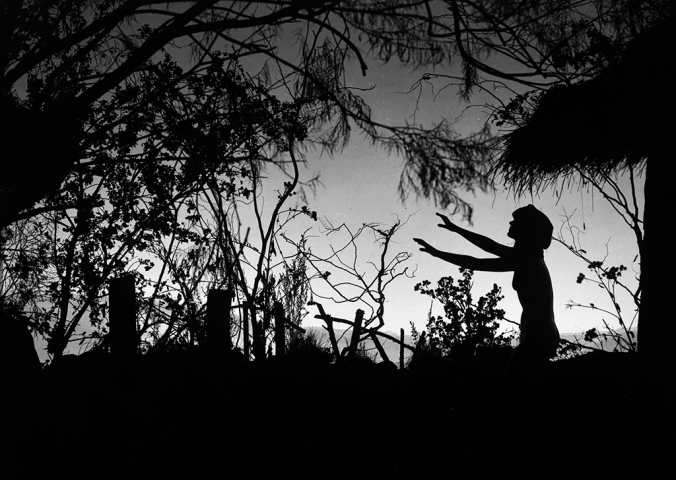
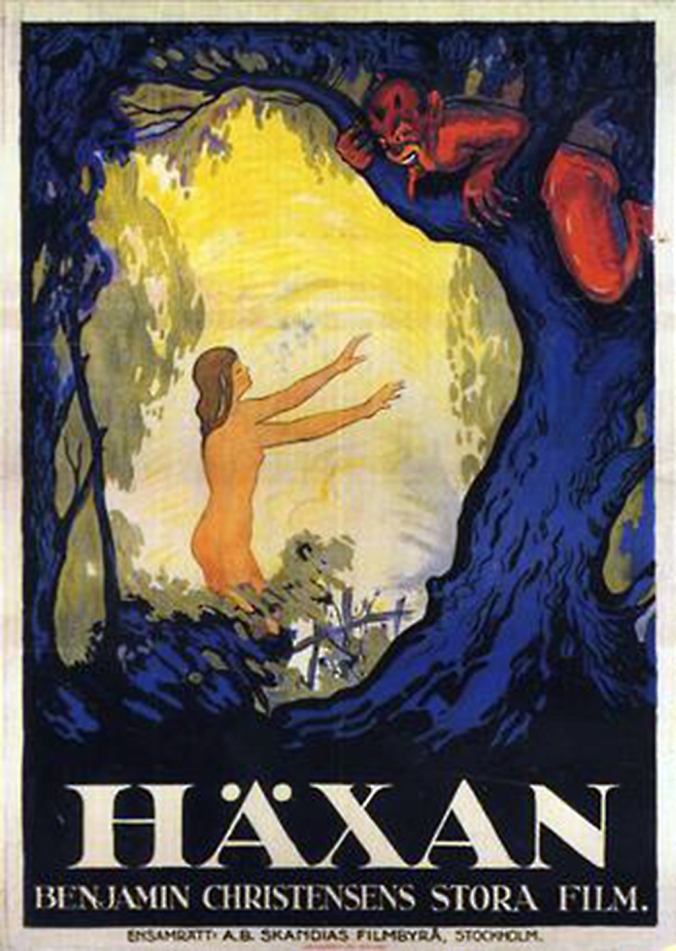
Pingback: Scary Silents: “The Phantom Carriage” | Goddess of Hellfire
Reblogged this on hocuspocus13 and commented:
jinxx ♣ xoxo
LikeLiked by 1 person
Reblogged this on Scenes of futures past.
LikeLiked by 1 person
Pingback: Scary Silents: Some Modern Short Silents | Goddess of Hellfire